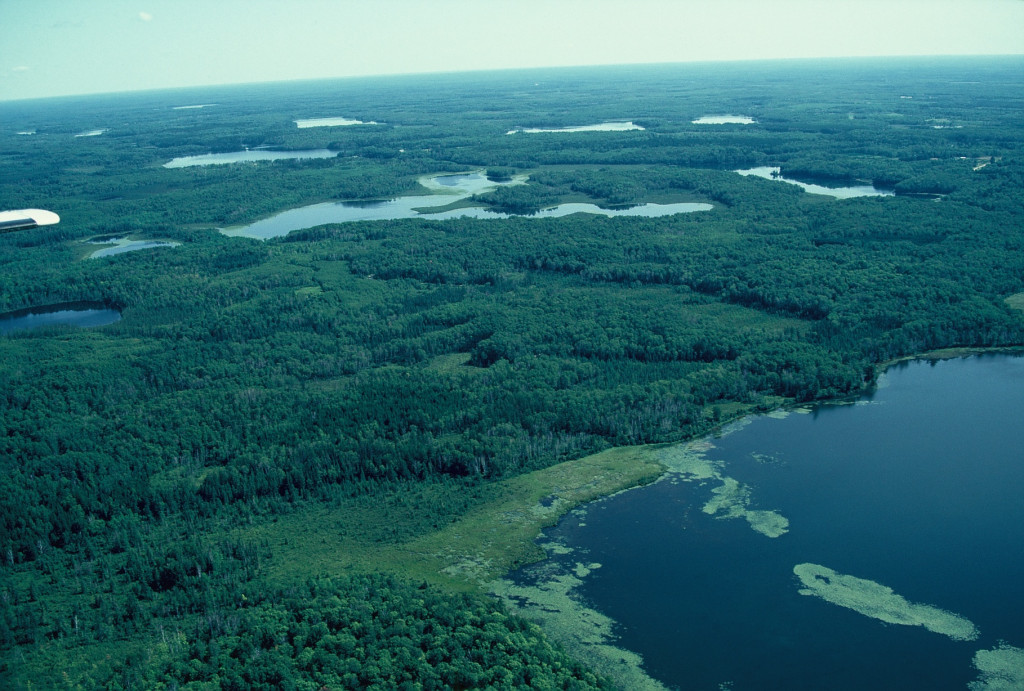Warmer temperatures shorten the lifespan of soil microbes and this may affect soil carbon storage, according to a new NSF-funded study published in Nature Climate Change this week.
A research team led by graduate student researcher Shannon Hagerty and Paul Dijkstra, biological sciences associate research professor, measured two key characteristics of soil microbes that determine their role in the soil carbon cycle: how efficiently they use carbon to grow and how long they live. “Higher temperatures make microbes grow faster, but they also die faster,” said Hagerty, who conducted the research as part of her master’s degree and was lead author on the study.
Soil microbes consume organic carbon compounds in soil, use some of it to make more microbes and release the rest to the atmosphere as carbon dioxide. The efficiency with which microbes use their food to make new microbes affects how much carbon remains in soil, and how much is released back to the atmosphere. The accepted idea before this study was that microbes would become less efficient at warmer temperatures.
The scientists incubated soil from a peatland and a forest in Minnesota at different temperatures and measured the efficiency with which microbes grew. They used a new method to measure microbial efficiency: they added small amounts of sugar and tracked how individual atoms in this sugar were turned into carbon dioxide.
“Microbes process sugars in similar ways as we do,” says Paul Dijkstra. “We know very well how these processes work in laboratory studies, and can predict which carbon atoms in sugar molecules end up as carbon dioxide, and which are used to build new microbes. We applied this knowledge to the microbes living in soil.”
The researchers found, contrary to expectation, that temperature had no effect on how microbes utilized their food, but instead boosted microbial death. “We don’t yet know why microbes are dying faster at higher temperatures. Maybe they are eaten by nematodes or mites, or they die because of viruses,” said Hagerty. “We need to know more about how temperature affects microbial death.”
To explore what these new findings could mean for soil carbon storage in a warming world, the team compared output from a soil model that includes the effect of temperature on microbial lifespan to models unaffected by temperature change. “Models are used to predict how soil processes change, for example, in response to climate change,” said Steve Allison, coauthor from the University of California, Irvine. “If we want to predict the future correctly, we’d better use models that accurately describe these microbial processes.”
Including a temperature-dependent lifespan to the model increased the amount of carbon retained in soils at warmer temperatures compared to estimates from traditional models. The study concludes that incorporating this new insight into soil models will improve our understanding of how soils influence atmospheric carbon dioxide levels and global climate.
Does this mean that with climate change, more carbon will stay in the soil? “Too early to tell,” said Bruce Hungate, director of NAU’s Center for Ecosystem Science and Society. “The results suggest that the biochemistry of the microbes remains the same with warmer temperature, but that predation and death become more important. This laboratory study is just the first step, identifying a potential mechanism. Now we need to study how, in the real world, and in the long-term, the processes of biochemical efficiency and lifespan will change. And nobody has done that yet.”
This project was a collaboration between researchers in Arizona, California and Minnesota.



